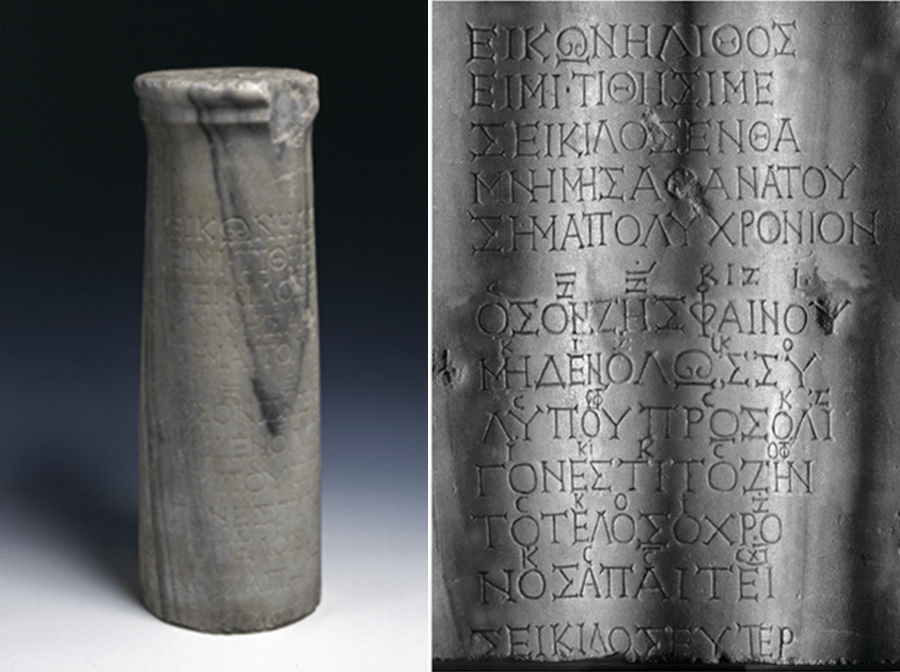From Marble to Melody: The Seikilos Song and Its Poetic Resonance
In the world of ancient Greek poetry and music, the term "lyric" holds a special place, signifying poetry that was meant to be sung to the melodious accompaniment of the lyre. While the lyrics have survived the test of time, the melodies have largely faded into obscurity. However, there exists a remarkable exception to this rule—the Song of Seikilos. In this article, we will delve into the fascinating world of the Song of Seikilos, a piece of music that has transcended centuries to offer us a glimpse into the musical and poetic genius of ancient Greece.
The Song of Seikilos
The Song of Seikilos is an ancient Greek composition comprising a four-verse poem inscribed on a cylindrical marble column. This remarkable piece of history currently resides in the National Museum of Copenhagen and is believed to date back to the 2nd century AD. What sets this song apart from its contemporaries is the fact that it is not just a lyrical composition but is accompanied by actual musical notation.
Words and Music
The song begins with an unmelodized verse couplet that serves as a preface, stating,
"I am an image and a stone; Seikilos sets me up here as a long-lasting marker of undying memory."
This is followed by the song itself, a concise text of 17 words with small alphabetic signs representing the pitches of the melody. Linear symbols and dots are used to indicate the duration and rhythm of specific syllables.
The fascinating aspect of the Seikilos Song is that it can be transcribed into modern stave notation, allowing it to be sung by either a male or female voice, at any pitch and tempo, and accompanied by various instruments. This flexibility highlights that there was no standardized performance practice in ancient times, contrasting sharply with modern musical traditions.
Interpreting the Stone
The column on which the Song of Seikilos is inscribed was discovered near Aydın, modern Turkey, and almost suffered the fate of becoming a flowerpot stand before its significance was realized. The inscription ends with the word "ZĒI," meaning "is alive," which is a conventional formula on grave markers, indicating that the dedicatee had survived. This led to the song being dubbed the "Seikilos Epitaph," but this interpretation has its challenges.
A New Perspective
The traditional interpretation of the Seikilos Song as an epitaph is challenged by the poetic couplet preceding it. The wording suggests that the column itself is speaking, drawing attention to the stone and its inscription rather than a dedicatee. Furthermore, the name "Seikilos" is thought to be of Sicilian origin, hinting at the possibility that the author was a Sicilian who traveled to Asia Minor for his musical pursuits.
The conclusion drawn from this alternative perspective is that Seikilos created the inscription not as an epitaph but as a monument to preserve his musical and poetic creativity for posterity.
Metre and Rhyme
Another intriguing aspect of the Seikilos Song is its use of meter and rhyme. While initially it may appear metrically erratic, closer examination reveals a regular pattern. The verses follow a distinct rhythm, incorporating variations, resolution, syncopation, and anaclasis. When combined with melodic duration signs, a unique 6/8 rhythm emerges.
Moreover, the song features rhyme in the form of assonance, creating a rhyme scheme (AABB) not typically found in classical lyric poetry. This suggests that the song should be appreciated more for its aural qualities rather than subjected to strict formal analysis.
In the Song of Seikilos, we find a precious relic of ancient Greek culture that defies traditional categorization. Beyond being a mere epitaph, it appears to be a proud display of musical and poetic inventiveness. Seikilos, or Sí-ki-los, has left us with a musical treasure that encourages us to embrace life and creativity. As we listen to the echoes of this ancient melody, we are reminded of the enduring power of art and the timeless beauty of human expression.
Armand D’Angour, a distinguished scholar of classical music at the University of Oxford, once wrote that the Seikilos Song is a bid for musical and poetic excellence to be honored by time itself. It is a testament to the enduring spirit of creativity that transcends generations and continues to inspire us today.








